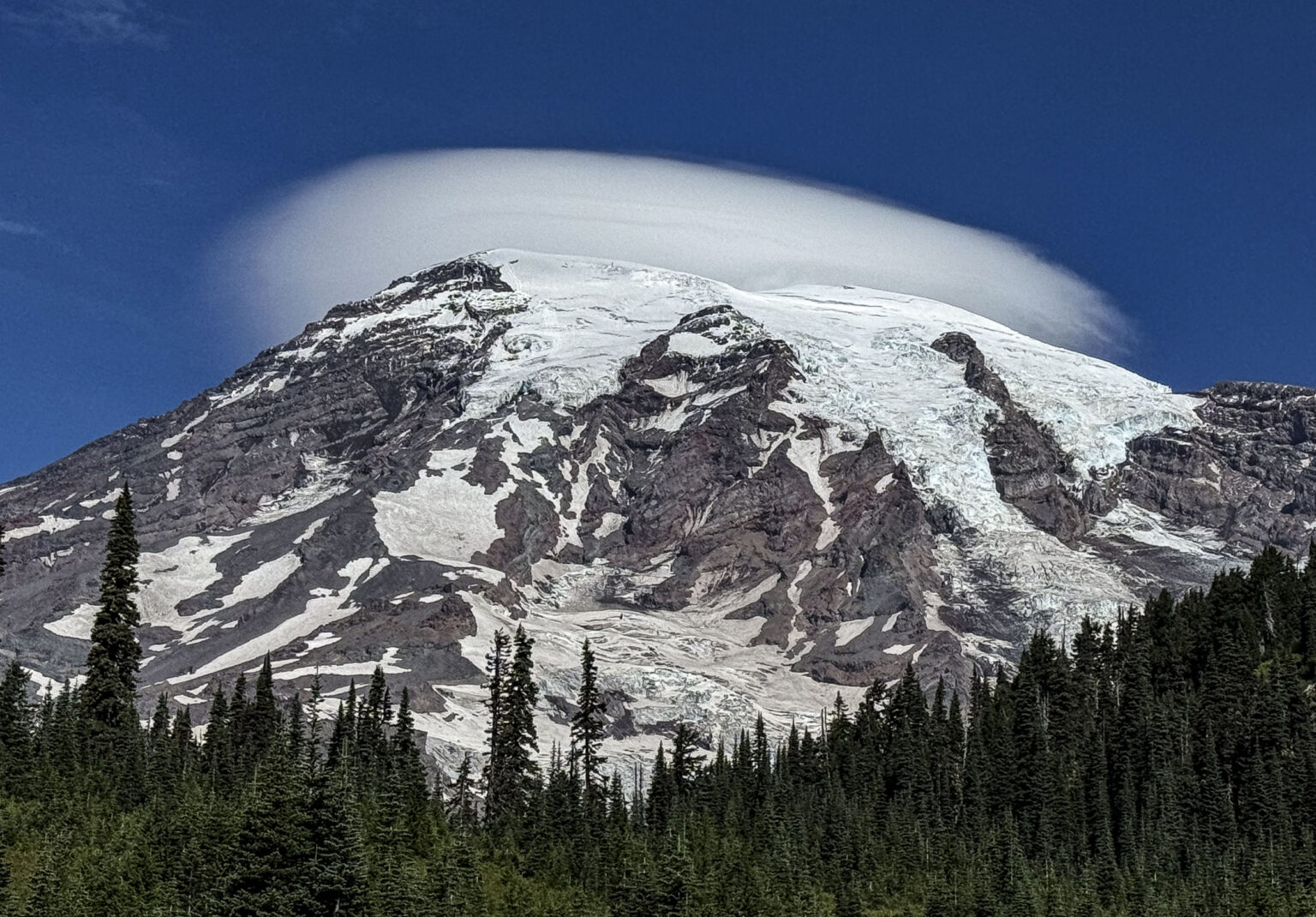A “swarm” of earthquakes began at Mount Rainier in Washington in the early morning hours on Tuesday with hundreds of quakes detected so far, making it the largest such event at the volcano since 2009.
“These earthquakes are a reminder that Mount Rainier is an active volcano,” Cascade Volcano Observatory (CVO) research seismologist Weston Thelen told Newsweek. “Based on our observations, we think the most likely cause of the earthquakes is water moving around the crust above the magma chamber.”
Why It Matters
Mount Rainier is an active stratovolcano 45 miles southeast of Tacoma and 60 miles south-southeast of Seattle. Its last eruption was “a light dusting of ash” in 1894, the USGS said in a report. Large eruptions haven’t occurred for more than 1,000 years.
Earthquakes frequently occur at Mount Rainier, but they usually do so at a rate of about nine per month. On Tuesday, hundreds of earthquakes hit within hours.
News of the swarm might be alarming to those who live near the volcano, but the USGS assured the public that there is no cause for concern.
What To Know
At times, earthquakes have triggered volcanos, but only if the volcano is already poised to erupt and only when the earthquake is large, or greater than a magnitude 6.0, the USGS said.
USGS volcanologists don’t anticipate Mount Rainier will erupt. The volcano alert level remains at NORMAL, and the current activation code is GREEN, according to the USGS. This means the volcano is not erupting.
Earthquake swarms occur at Mount Rainier once or twice each year, but they don’t usually include hundreds of earthquakes. However, more than 1,000 earthquakes struck during the 2009 swarm, which lasted for three days. The largest quake during that swarm was a magnitude 2.3.
“Past swarms have been attributed to circulation of fluids interacting with preexisting faults,” the USGS said.
The swarm began at 1:29 a.m. local time Tuesday. The largest has been a magnitude 1.6, Thelen said, which is far too small to feel. However, future quakes could be stronger.
Damage doesn’t typically occur until an earthquake measures magnitude 4 or 5.
What People Are Saying
Cascade Volcano Observatory research seismologist Weston Thelen told Newsweek: “Earthquakes are a common phenomenon beneath volcanoes, even ones that are dormant, because there are often lots of water and heat beneath the volcano. Swarms, or clusters of earthquakes that are close in time and space are also common at volcanoes. While the swarm at Mount Rainier has more earthquakes than typical swarms we have seen at Mount Rainier, we have only monitored the volcano well since the late 1980’s. Given that the least eruption was about 1000 years ago, we still have a lot to observe to understand the entire volcanic cycle at Mount Rainier.”
USGS Volcanos, on X, formerly Twitter: “Past swarms like this have been attributed to circulation of hydrothermal fluids beneath the summit interacting with preexisting faults.”
USGS Volcanos, in a follow-up post: “Mount Rainier is well monitored by a dense network of seismic, infrasound, GPS, and webcam stations. No other changes are apparent at the volcano at this time.”
Mount Rainier National Park, on Facebook: “There are no known safety concerns for visitors, staff, or adjacent communities related to the increased earthquake activity at the mountain’s summit. The alert level for Mount Rainier remain at GREEN/NORMAL.”
What Happens Next
Monitoring will continue at Mount Rainier, and additional notices will be issued if the situation calls for it. Thelen said it is unclear how long the swarm will last and if it will intensify.
Read the full article here

